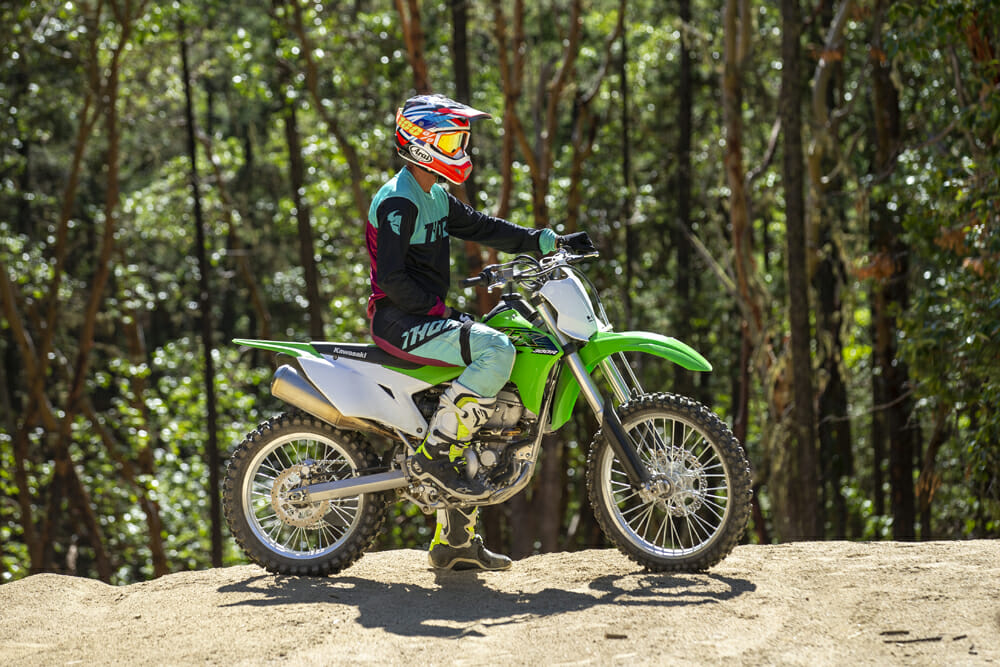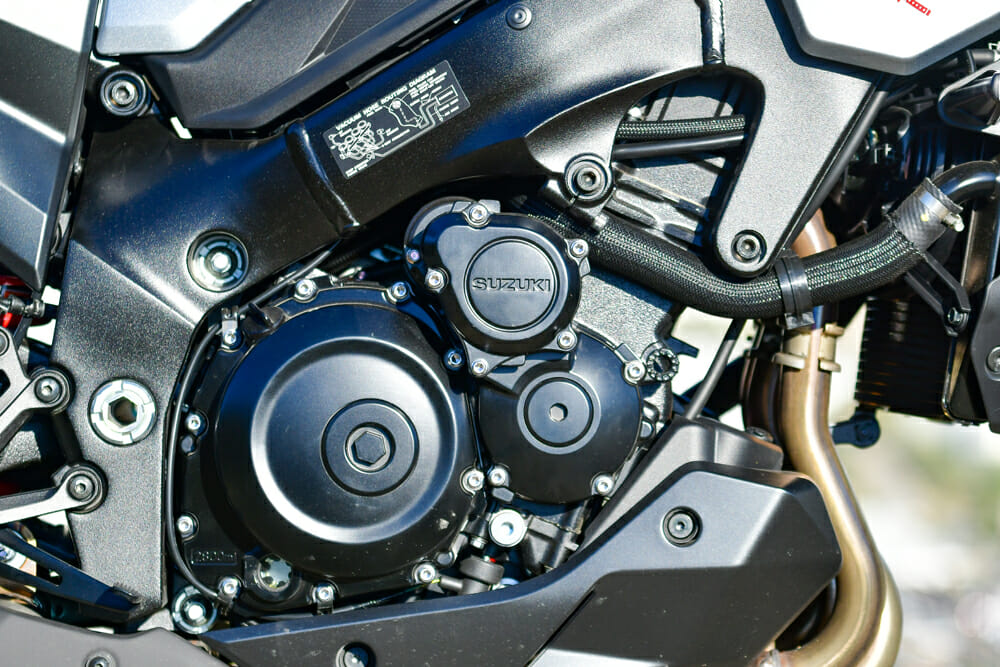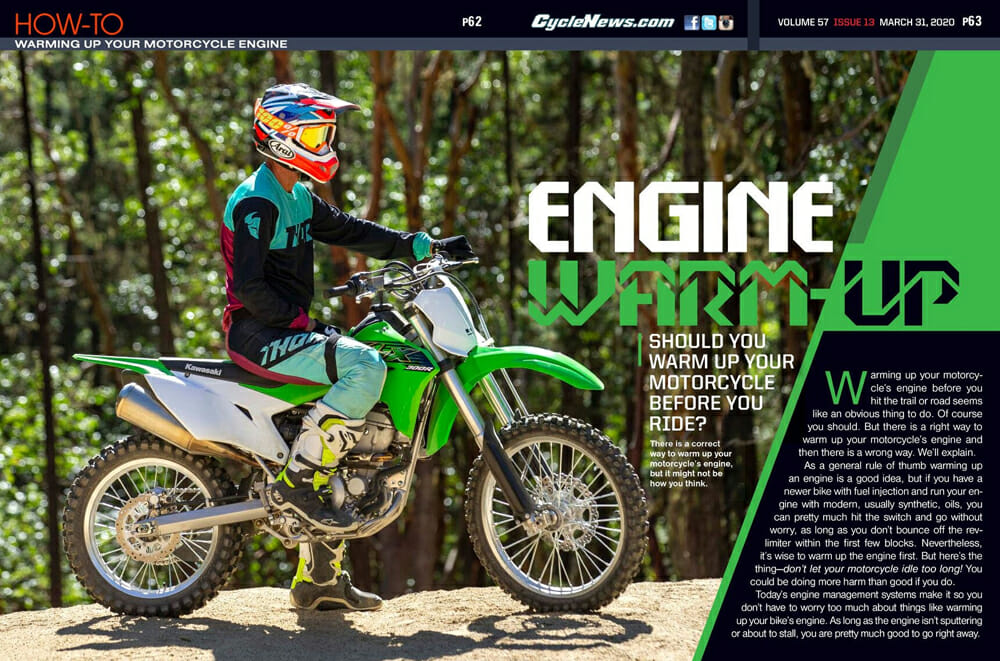Cycle News Staff | April 5, 2020
Should You Warm Up Your Motorcycle Before You Ride?
 There is a correct way to warm up your motorcycle’s engine, but it might not be how you think.
There is a correct way to warm up your motorcycle’s engine, but it might not be how you think.
Warming up your motorcycle’s engine before you hit the trail or road seems like an obvious thing to do. Of course you should. But there is a right way to warm up your motorcycle’s engine and then there is a wrong way. We’ll explain.
As a general rule of thumb, warming up an engine is a good idea, but if you have a newer bike with fuel injection and run your engine with modern—usually synthetic—oils, you can pretty much hit the switch and go without worry, as long as you don’t bounce off the rev-limiter within the first few blocks. Nevertheless, it’s wise to warm up the engine first. But here’s the thing—don’t let your motorcycle idle too long! You could be doing more harm than good if you do.
Today’s engine-management systems make it so you don’t have to worry too much about things like warming up your bike’s engine. As long as the engine isn’t sputtering or about to stall, you are pretty much good to go right away.
Older engines, however, can be more finicky, so you should always plan for a short—a minute or less—warm-up period before you roll out, but the general rule of thumb still applies to older engines as they do to modern engines—once you’re sure the engine isn’t going to stall, you can start riding right away easily, with or without the choke. However, turn off the choke as soon as possible so as not to gum up the engine’s valves, piston rings and spark plug(s).
“There is a need to allow an engine to warm up,” says Danny Massie of Maxima Racing Oils. “There is a multitude of reasons behind warming up a motorcycle, including allowing the metal parts to grow in size in a controlled manner (due to heat) and to allow for proper oil migration. It isn’t necessary to idle your motorcycle excessively (e.g., five minutes) during the warm-up period because this poses a separate set of issues related to overheating because there is no air flowing through the radiators, cylinders and heads. A good warm-up protocol is starting the motorcycle and allowing a minute of idle, then riding the motorcycle in an easy manner to allow time for the engine to come up to temperature. Good examples of this would be a sight lap, riding to the trailhead or easing the bike out of your neighborhood before blasting the open road.
 Letting your motorcycle’s engine idle too long during warm-up can do more harm than good.
Letting your motorcycle’s engine idle too long during warm-up can do more harm than good.
“The same basic principles apply to all types of motorcycles, whether they are two-stroke, four-stroke, street or off-road, etc. A proper warm-up allows the different metals in the engine to take on heat, which causes them to move a bit; however, not all parts are made from the same metallurgy, so they expand at different temperatures. Not warming these parts up and revving the engine to the moon can cause parts to stretch and touch other metal parts resulting in seizure and wear that is detrimental to the life of the engine.”
We can’t emphasize this enough: don’t feel the need to let your bike sit and idle for five-plus minutes before you hit the road or the MX track, we see this quite often at our local MX tracks and trailheads. Plus, it’s a good idea to keep idling to a minimum even after the engine is up to proper operating temperature.
“All engines are cooled in some manner,” Massie says. “This can be simple designs like fins on an air-cooled engine or more dynamic cooling systems that utilize radiators and oil coolers. All of these systems rely on air movement to pull heat out of the engine. Excessive idling does not benefit the engine and lends to elevated operating temperatures.”
So, the bottom line is: yes, warm up your motorcycle’s engine before you hit the trail or road but no longer than it would take you to slip on your gloves and position your goggles casually. Then run your bike easily through the gears a couple of times and then let ’er rip! CN
